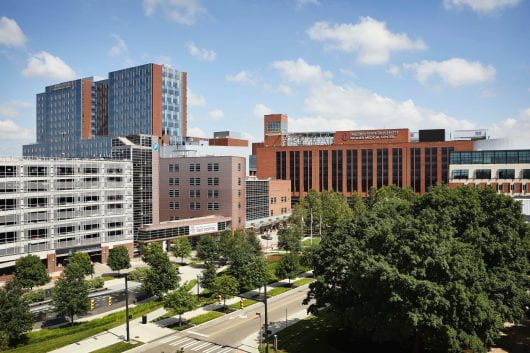
The College of Medicine will help increase medical care availability in smaller cities and rural areas with its new degree path. Credit: Lantern File Photo
The College of Medicine is partnering with Bon Secours Mercy Health to help increase medical care availability in smaller cities and rural areas.
Dr. Daniel Clinchot, vice dean for education in the College of Medicine, said community medicine will be a new medical school degree path to prepare physicians of all medical specialties to practice in less populated areas, starting in 2024.
“Through our state legislature and governor’s office, we know that there is a lack of physicians in the smaller cities and rural areas,” Clinchot said. “I think Ohio State felt the need to try to meet that need of the state.”
In 2020, only 11 percent of physicians practiced in rural areas, according to the American Association of Medical Colleges, and rural areas are more likely to suffer from health professional shortages.
In this pathway, Clinchot said students will complete their first two years of medical school at the Ohio State Wexner Medical Center and their second two years at Mercy Health — St. Rita’s Medical Center in Lima, Ohio.
“They’ll have their first two years with the rest of the traditional M.D. class, except they will have special programming that sort of helps them understand the best practices for practicing in smaller and rural communities,” Clinchot said.
Clinchot said medical students tend to practice in the areas where they study.
“It’s much harder to have students train in a city like Columbus and then go into a rural area or a smaller city to practice,” Clinchot said. “It’s much easier for them to see that as a life if they train in that space.”
Dr. Matthew Owens, chief clinical officer of Mercy Health, said this pathway came to fruition as part of the Wexner Medical Center and Mercy Health’s Healthy State Alliance — an effort to improve the health and well-being of Ohio.
“The great thing is that between Mercy Health and Ohio State, we have entered this alliance in order to be able to better the world of not only health care, but also medical education across the state,” Owens said.
The community medicine pathway is open to any students regardless of the medical specialty they wish to pursue, Clinchot said.
“They need surgeons, they need primary care physicians, they need pediatricians, so we will not limit the specialty that the student goes into,” Clinchot said. “If you’re in this track, you can go into any specialty you want because the community will benefit because they have needs across all types of physicians in those areas.”
Clinchot said to be accepted to the program, students must demonstrate a commitment to practicing medicine in a small- to medium-sized city or rural area. According to the path’s website, those in the admissions committee will interview applicants and determine their commitment.
“I think Lima was a good choice because it’s a smaller city, and it pulls a large rural population in and cares for those individuals,” Clinchot said. “I think Lima has a lot of areas that are underserved, and I think our medical students will contribute to improving the health of the members within that community.”
Clinchot said each year, 15 students will be accepted to the community medicine track After full implementation, there will be 60 students in the program. He said there is no difference in cost between the community medicine track and the other medical school tracks at Ohio State.
Owens said this pathway will offer students a direct look at their futures.
“Much of medical training is done in large academic centers, which is wonderful because there’s a variety of exposures that are had there. But, to be honest, most medicine is practiced in community-based hospitals,” Owens said. “That’s where medical trainees don’t necessarily get a lot of exposure throughout their education.”
Clinchot said the first cohort will start in August 2024, and students can begin to apply in June 2023.


